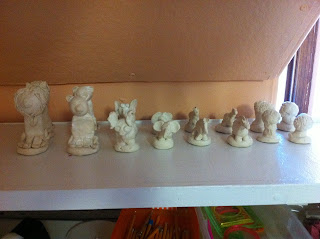Silent Auction Mirror
7th & 8th Grade Copper Embossed/Engraved Mirror
This project sold last night at our annual Silent Auction for $350.00. I was thrilled, it took me 3 class periods with my students, a few hours on my own and about $20.00.
Materials:
sketch paper
pencils, dull and sharp
drawings of wildflowers
tape
padded paper napkins or towels
stomps
5"x5" sheets of coppertone metal sheets, enough for the class plus 8 extra to cover the sides. I bought mine through Dick Blick: http://www.dickblick.com/products/art-metal-foil-sheets/
India Ink
20"x20" of wood - I used birch plywood from Home Depot which they will usually cut to size for me.
Liquid Nails
hanging hardware
10"x10" mirror
Day 1:
The students each were given a paper with 2- 5"squares traced on the paper. I explained the project & instructed them to look through the many pages of wildflower drawings that I had & start sketching. I explained that I wanted them to either fill up the page, create a border around the edges or have a design going into each of the four corners.
Day 2:
I did a quick demonstration of the following process so that they would have an idea how this all works. Cut out their favorite sketch & tape it to top of the copper plate. Place the copper plate & sketch on a padded surface like quilted paper towels folded up. Go over the sketch in pencil so that it makes an indent in the copper plate. Remove the paper. Now take a dull pencil and retrace any areas that they would like to engrave. Flip the copper plate over and use either the dull pencil or a stomp to emboss areas that they would like to pop out. Some students chose to add their initials to their copper square
Day 3:
Paint the entire copper plate with India Ink & let it dry some. Wipe the excess off until you are happy with the antique look. This took a few tries sometimes.
On my own: Put the hanging hardware on the back of the wood.I centered the mirror on the wood board and secured it with Liquid Nails. I then took the 8 extra copper sheets and cut them in 1/2 with regular scissors. I molded them around the sides of the board & secured them with Liquid Nails. This gave the mirror a finished look so, when it is hanging on the wall, you won't see any wood. Then, I arranged the sheets around the mirror and secured them once again with Liquid Nails caulking. It took only a few hours to dry. I had all of the kids sign their names to the back of the mirror & it was off to the auction. Lots of oohs and aahs and "how did they do that" comments :)
My inspiration was this piece that I found on a web search, it is spectacular:
https://www.flickr.com/photos/anne_page/2330604385/

























